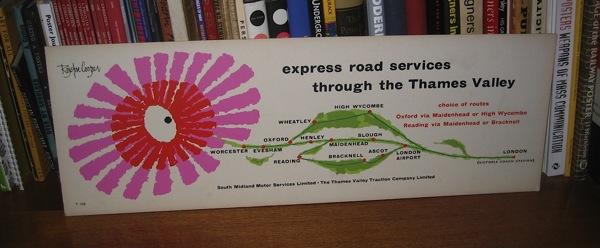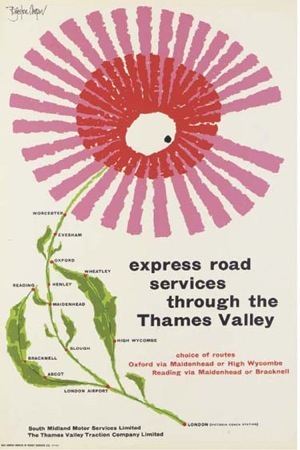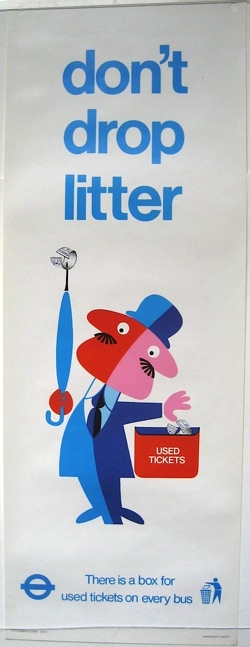Thick and Thin
This has been hanging around on the bookshelves for a bit, waiting to find a home.
Which is quite a tricky problem as I can’t exactly roll it up as it’s on card. Fortunately I’m starting to quite like it where it is; it may be there for a while.
The design is by Royston Cooper and dates, according to Christies at least, from 1960. Until the long one turned up on eBay, I’d only ever known the image in its upright form.
But I think I prefer it reclining. Here’s the whole thing for your delectation, and to enable you to consider just how little a coach trip from Worcester to Slough in 1960 would be as much fun as the poster.
All of which made me think about long thin posters. Partly only so that I could post this, which is one of my favourite posters ever.
The entire 1950s encapsulated in a fifteen inch long piece of paper. Genius.
Mr Crownfolio remembers that the seller told him this was produced for the Sheffield buses, but other long thin posters turn up in a couple of places.
For example, the GPO produced strip posters for their vans. At 51″ long, they were almost like till rolls and I’ve only ever seen them on the BPMA site. Which makes this Austin Cooper, at a mere 6″ x 20″, a bit of a mystery.
It dates from 1944 so perhaps they were fixed to bicycles rather than vans. Or something.
London Transport were the other home of strangely shaped posters, like this 1974 Harry Stevens that I think may have been meant for display on a bus stop.
And this Eckersley from 1960 which the LT Museum site call a panel poster.
Which were meant for both buses and tubes, it seems.
Panel posters were produced for display in Underground car interiors, as well as on the inside and outside of buses and trams. Because they did not have to fit a standard frame or wall space, they are smaller than other poster formats and vary slightly in size.
And I imagine that because so many were pasted on, only a few survive. That’s a shame really, because in many ways they are very manageable posters, much easier to find space for than some of their bigger cousins. At least I hope that’s true, because we’ve bought another two from the seller of the Cooper, by Studio Seven and Lander this time. More on those when they arrive.






